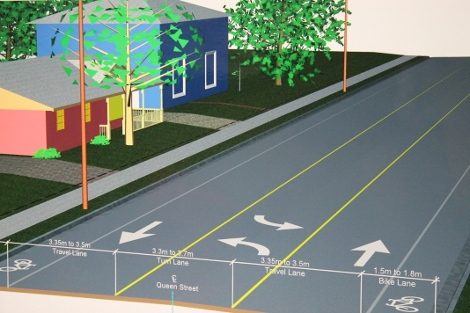 Sault Ste. Marie city councillors were surprised to learn this week of a legal problem with the recent three-laning of Queen Street East.
Sault Ste. Marie city councillors were surprised to learn this week of a legal problem with the recent three-laning of Queen Street East.
It turns out that the new centre turn lanes from Church Street to east of Gravelle Street near the Sault Ste. Marie Golf Club were unenforceable.
“Until signs are erected and this bylaw is passed, police do not have the authority to enforce the left-turn lane,” city solicitor Nuala Kenny said at Monday night’s City Council meeting.
Councillors amended the city’s traffic bylaw to establish a designated centre turn lane on that part of Queen Street.
The new designation applies to both eastbound and westbound traffic.
The city became interested in reducing Queen Street to three lanes after Sault Area Hospital signed a contract in 2007 to move from its waterfront location to Third Line near Great Northern Road.
Although it was anticipated some use would be found for the Queen Street hospital site, traffic there was expected to decline significantly after the hospital move.
In 2008, a city-hired transportation planning consultant concluded that Queen Street East could safely be reduced to a three-lane configuration: one lane in each direction with provision for cyclists and a centre turning lane.
The reconfigured Queen Street reopened to traffic this fall but poor weather and an unsuccessful resident’s appeal to Ontario’s environment minister delayed painting of bicycle lane markings, turn arrows and white lines at the intersections until last month.